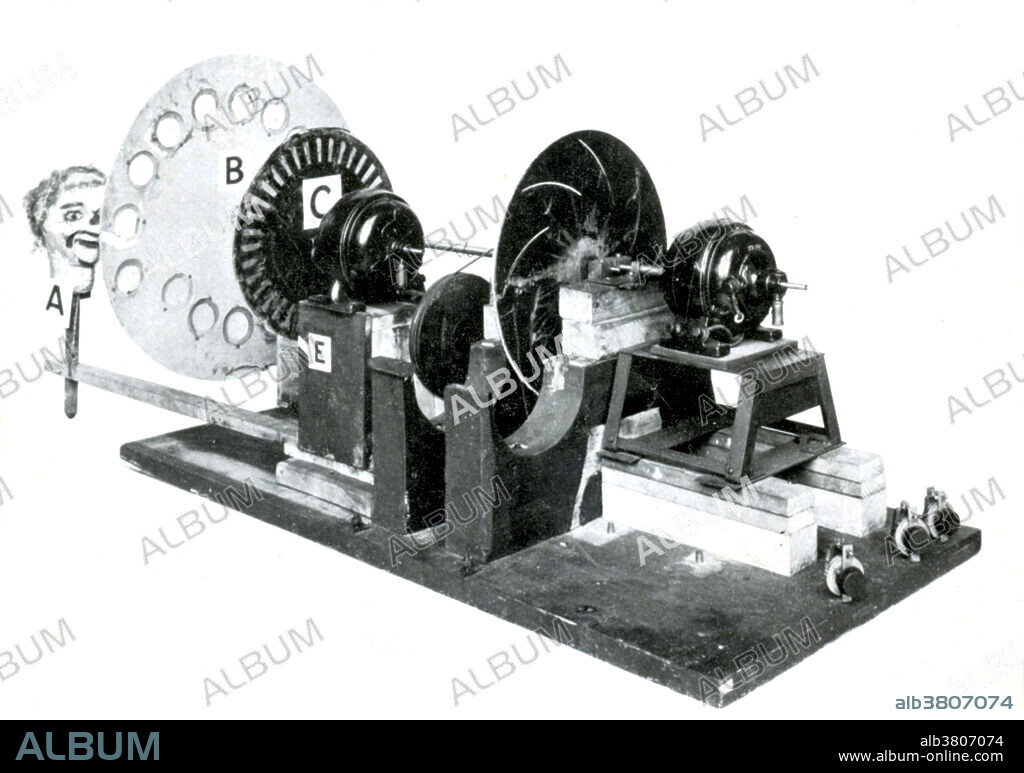alb3807074
Baird's Experimental Television, 1925

|
Add to another lightbox |
|
Add to another lightbox |



Buy this image.
Select the use:

Title:
Baird's Experimental Television, 1925
Caption:
In his first attempts to develop a working television system, Baird experimented with the Nipkow disk. Paul Nipkow had invented this scanning disc system in 1884. work is important because Baird and many others chose to develop it into a broadcast medium. Using a Nipkow disk, he succeeded in demonstrating the transmission of moving silhouette images in London in 1925, and of moving, monochromatic images in 1926. Baird's scanning disk produced an image of 30 lines resolution, just enough to discern a human face, from a double spiral of Photographic lenses. This demonstration by Baird is generally agreed to be the world's first true demonstration of television, albeit a mechanical form of television no longer in use.
Credit:
Album / Science Source / New York Public Library
Releases:
Image size:
4200 x 2952 px | 35.5 MB
Print size:
35.6 x 25.0 cm | 14.0 x 9.8 in (300 dpi)
Keywords:
1888 • 1946 • 20 20TH XX XXTH TWENTIETH CENTURY • 20 XX TWENTIETH CENTURY • 20TH CENTURY • 20TH • BAIRD • BRITISH • BROADCAST • CELEBRITIES • CELEBRITY • CENTURY • COLOR • COLOUR • COMMUNICATION • DISC • DISCUS • DISK • E-COMMERCE • ELECTRONIC COMMERCE • ELECTRONIC SYSTEM • ELECTRONIC • ELECTRONICS • ENGINEER • EUROPEA • EUROPEAN • EUROPEANS • EXPERIMENTAL • FAMOUS PEOPLE • FAMOUS • FIGURE • FLUSH • GREYSCALE • HISTORIC • HISTORICAL • HISTORY • IMAGE • IMPORTANT • INNOVATOR • INVENTION • JOHN • LOGIE • MALE • MAN • MECHANICAL • MEN • NIPKOV • NIPKOW • NOTABLE • PEOPLE • PERSON • PERSONALITIES • PERSONALITY • PHOTO • PHOTOGRAPH • PHOTOGRAPHIC • SAVANT • SCANNING • SCIENTIFIC • SCIENTIST • SCOTTISH • TECHNOLOGICAL • TECHNOLOGY • TELECOMMUNICATION • TELEVISION (MEDIA) • TELEVISION SET = TV SET = TELLY • TELEVISION SET • TELEVISION • TELLY • TRANSATLANTIC • TRANSMISSION • TV SET • TV • TWENTIETH CENTURY • WELL-KNOWN
 Pinterest
Pinterest Twitter
Twitter Facebook
Facebook Copy link
Copy link Email
Email
